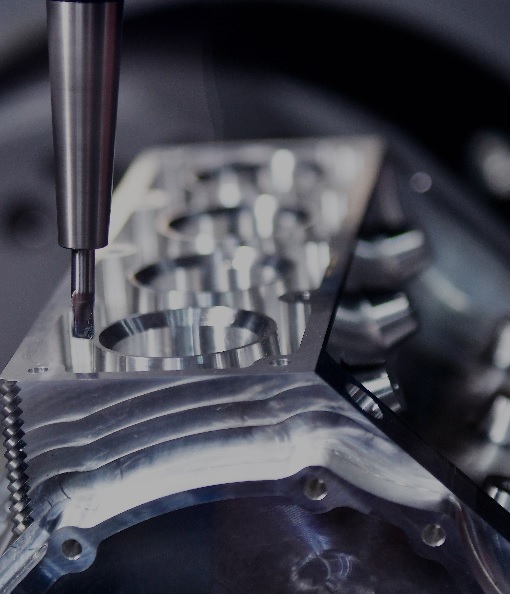
In the face of supply chain disruptions, labor shortages, rising material costs, and technological advances, it’s crucial to maintain your competitive edge. High-speed milling (HSM) and vertical machining centers (VMCs) can help solve these issues, stay ahead of the competition, and assist with high-volume production and tight tolerance requirements.
High-speed milling is a machining process that involves milling a workpiece at high cutting speeds and feeds using specialized cutting tools and machines. The cutting tools used in HSM are typically made of high-speed steel, carbide, or diamond and are designed to withstand the high cutting speeds and feeds used in the process. This technology offers multiple advantages and benefits to the user, including increased productivity and shorter machining times.
The Advantages of High-Speed Milling
If you’re looking to produce high-quality parts quickly and efficiently, look no further than high-speed milling. This technology provides many advantages, specifically in the form of faster machining times, improved surface finish, and reduced tool wear.
Increased Productivity
With faster machining speeds, HSM can produce parts quicker than traditional machining methods, increasing the overall efficiency of your operation. This improved productivity allows you to meet tight deadlines without sacrificing accuracy and quality, adding to your competitive advantage. Sodick VMCs feature a 6,000 to 40,000 RPM spindle, making it ideal for high-speed, high-precision direct milling of hard surfaces. Additionally, the spindle is high-torque and highly durable and includes micro-oil mist lubrication.
Improved Surface Finish
Unlike traditional machining methods, HSM can produce parts with a fine surface finish. This is critical for applications such as aerospace and medical devices, where the surface finish has a direct impact on the performance and safety of the product.
Reduced Tool Wear
High-speed milling utilizes specialized tools that are designed to withstand the high speeds and temperatures involved in the machining process. As a result, tooling undergoes less wear and can last longer, achieving more cost-effective machining and minimizing disruption and downtime.
Higher Accuracy and Precision
With advanced software and tooling, HSM allows you to achieve greater accuracy and precision than you would with traditional machining methods. When working with complex geometries and tight tolerances, this improved precision helps ensure your finished product is of the highest quality possible. Sodick VMCs utilize a symmetrical bridge structure that keeps thermal displacement generated by the spindle within 3 μm.
Reimagined Competitive Advantage
With reduced downtime, more accurate results, higher quality products, and more cost savings, utilizing HSM allows you to hone your competitive advantage through pricing strategies and product availability. Using HSM on your shop floor gives you the opportunity to reimagine how you measure up against your competitors, ensuring you stay one step ahead.
High-Speed Milling: Best Cases
High-speed milling is best used for applications that require high-precision machining with minimal operator intervention. HSM is particularly well-suited for machining complex parts with intricate geometries, such as aerospace components, medical implants, and automotive parts. Some specific applications where HSM is commonly used include:
Aerospace Components: Turbine blades, engine components, and airframe structures are often created using HSM because of the advanced precision that can be achieved with vertical machining centers.Mold and Die Creation: HSM is often used to create molds and dies for injection molding, die casting, and other manufacturing processes due to the VMC’s ability to create products with complex geometries. Medical Implants: When producing hip and knee replacements, for example, the finishing and high-precision capabilities of HSM ensure that these components are compatible with the human body.
Solving Challenges with HSM
With the myriad of challenges facing the manufacturing industry, finding equipment that can help you solve these issues is critical. High-speed milling has many advantages when facing situations such as high-volume production, tight tolerance requirements, hard-to-machine materials, and surface finishing specifications. Ultimately, the choice of machining process depends on a variety of factors, including the desired part geometry, material properties, surface finish requirements, and production volume.
To determine the right high-speed milling machine for your application, explore our solutions and connect with your Sodick representative. We’ll assist you in finding the perfect fit for your operation.














